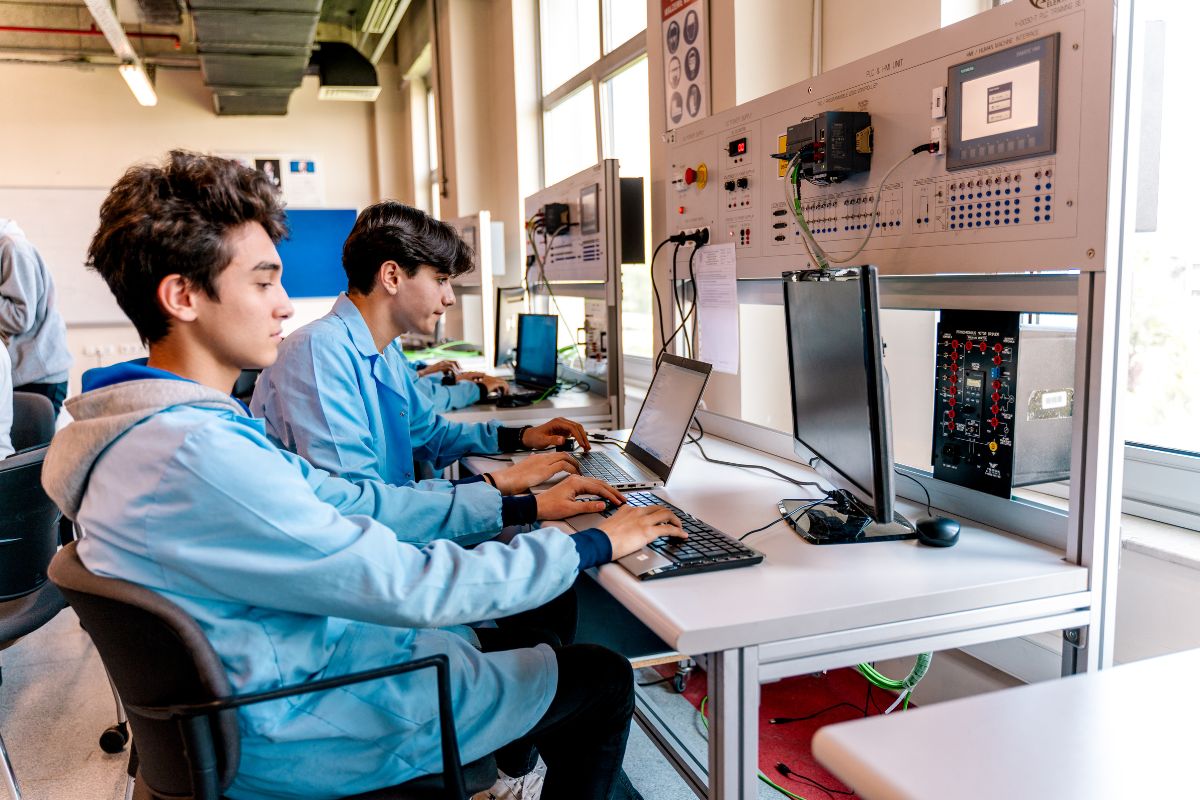Creating Effective Hybrid Learning Environments: Strategies for Educators

Strong 8k brings an ultra-HD IPTV experience to your living room and your pocket.
The evolution of education has seen a significant shift toward hybrid learning environments—combining traditional face-to-face instruction with online learning components. This model emerged out of necessity during the COVID-19 pandemic and has since proven to enhance educational accessibility and flexibility. However, creating an effective hybrid learning environment poses unique challenges for educators. This article explores key strategies to optimize hybrid learning experiences for students.
Understanding Hybrid Learning
What is Hybrid Learning?
Hybrid learning is an instructional approach that blends in-person classroom experiences with online learning activities. This model allows educators to leverage technology while accommodating diverse learning preferences and needs. Students can engage with course materials at their own pace while still benefiting from direct interaction with instructors and peers.
Benefits of Hybrid Learning
Flexibility: Students can learn at their own pace and access materials from various locations.
Personalization: Educators can tailor learning experiences to meet individual needs.
Improved Engagement: A mix of synchronous (live) and asynchronous (recorded) activities can enhance student participation and motivation.
Resource Optimization: Schools can maximize resources by utilizing both physical and digital tools.
Strategies for Creating Effective Hybrid Learning Environments
1. Establish Clear Learning Objectives
Setting clear and measurable learning objectives is crucial for guiding students through their hybrid learning experience. Objectives should:
Be aligned with curriculum standards.
Define what students are expected to learn and accomplish in both online and in-person settings.
Be communicated effectively to students, helping them understand the purpose of each activity.
2. Utilize a Robust Learning Management System (LMS)
A reliable LMS is essential for organizing and delivering course materials, assignments, and assessments. Features to consider include:
Accessibility: Ensure that the LMS is user-friendly and accessible for all students, including those with disabilities.
Integration: The LMS should integrate seamlessly with other tools and resources used in the classroom.
Analytics: Utilize analytics tools to monitor student progress and engagement, allowing for timely interventions when necessary.
3. Design Engaging Content
Creating engaging content is vital to maintaining student interest and motivation in a hybrid environment. Strategies include:
Variety: Use a mix of multimedia resources (videos, podcasts, interactive quizzes) to cater to different learning styles.
Interactivity: Incorporate interactive elements such as discussion forums, group projects, and peer reviews to encourage collaboration.
Real-World Applications: Design assignments that relate to real-world scenarios, helping students see the relevance of their learning.
4. Foster Communication and Collaboration
Effective communication is key to a successful hybrid learning experience. Strategies to enhance communication include:
Regular Check-Ins: Schedule regular virtual office hours or check-ins to provide support and address student concerns.
Encourage Peer Interaction: Facilitate opportunities for students to collaborate in both online and in-person settings, such as group projects or discussion groups.
Use Multiple Channels: Utilize various communication platforms (email, chat, video conferencing) to ensure students can reach out easily.
5. Create a Structured Schedule
A well-structured schedule helps students manage their time effectively in a hybrid learning environment. Considerations include:
Consistent Routines: Establish predictable routines for both online and in-person activities to help students navigate their learning.
Time Management Tools: Provide tools such as calendars or to-do lists to assist students in organizing their tasks and deadlines.
Balanced Workload: Ensure that the workload is balanced between in-person and online components, preventing student overwhelm.
6. Incorporate Assessment and Feedback
Regular assessment and feedback are essential for measuring student progress and understanding. Strategies to implement include:
Formative Assessments: Utilize quizzes, polls, and short assignments to gauge understanding throughout the learning process.
Constructive Feedback: Provide timely and constructive feedback to guide students in their learning journey.
Self-Assessment Opportunities: Encourage students to reflect on their learning and assess their own progress.
7. Support Diverse Learning Needs
In a hybrid learning environment, educators must be mindful of the diverse needs of their students. Strategies include:
Differentiated Instruction: Tailor instruction to meet the varying needs, interests, and abilities of students. This may involve providing additional resources or modifying assignments.
Accessibility Features: Ensure that all materials and resources are accessible to students with disabilities, using captions, transcripts, and alternative formats where necessary.
Culturally Responsive Teaching: Incorporate diverse perspectives and cultural relevance into the curriculum to engage all students.
8. Train Educators and Staff
Educators play a critical role in the success of hybrid learning environments. Providing adequate training and support is essential:
Professional Development: Offer training on effective online teaching strategies, technology integration, and assessment techniques.
Peer Collaboration: Encourage educators to collaborate and share best practices for hybrid instruction.
Ongoing Support: Provide continuous support and resources to help educators adapt to changing technology and teaching methods.
Challenges in Hybrid Learning Environments
1. Technology Limitations
Not all students have equal access to technology or reliable Internet connections. Addressing this challenge may involve:
Providing devices or resources for students in need.
Offering alternative methods for accessing course materials.
2. Student Engagement
Maintaining student engagement in a hybrid setting can be challenging. Strategies to enhance engagement include:
Regularly soliciting student feedback on course activities.
Adapting instruction based on student interests and preferences.
3. Balancing Workload
Educators must ensure that the workload is manageable for both themselves and their students. This can be achieved by:
Planning ahead and aligning assignments across online and in-person components.
Collaborating with colleagues to share resources and strategies.
Conclusion
Creating effective hybrid learning environments requires thoughtful planning, clear communication, and a commitment to supporting all students. By implementing strategic approaches—such as utilizing technology, fostering collaboration, and prioritizing engagement—educators can optimize the hybrid learning experience. As education continues to evolve, embracing innovative teaching methods will be key to meeting the diverse needs of students in a dynamic world.
Uncover the latest trends and insights with our articles on Visionary Vogues
Note: IndiBlogHub features both user-submitted and editorial content. We do not verify third-party contributions. Read our Disclaimer and Privacy Policyfor details.







